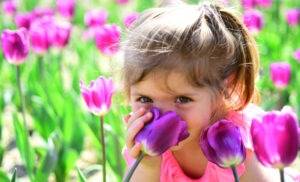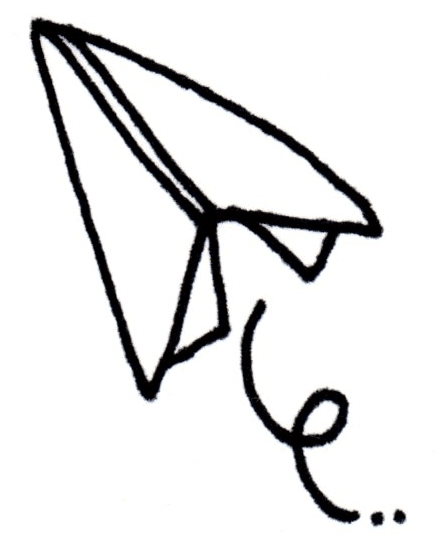Managing eczema in the spring



Spring is finally on its way, with lighter nights and warmer days. It’s definitely a feel-good time of year – not only does the springtime make us feel better in general, but it can also be more comfortable for eczema sufferers too with the temperatures being favourable – not too hot, not too cold. That said, pollen spores and changes in the weather can also trigger flare-ups of eczema in the spring. We look at the impact spring can have on eczema.
Eczema is such a variable condition that it’s no surprise that the changing seasons and have an impact on your child’s eczema. Changes to eczema in the spring can go either way. For some people, the warmer weather improves their symptoms. Others find their eczema is triggered by rising pollen levels. Temperature plays such an important role in managing your child’s eczema. Take a look at our helpful infographic which will help you choose how many layers your child needs as the weather warms up.
If your child is one of the lucky ones whose eczema settles during Spring, it may be possible for you to review the emollient you use and switch to a lighter version which is a little less onerous to apply and more comfortable to wear. It’s only a small change, but well worth taking the opportunity while you can. Talk to your GP/dermatologist or try a different version of your favourite brand, if it’s available.
With the weather on our side, hopefully, your little one can enjoy the longer days playing outdoors after nursery or school without having to battle against the constant annoyance of itchy skin. That said, it’s well worth understanding some of the issues that can trigger Springtime flare-ups and what to do about them.
Springtime flare-ups: Managing eczema in the spring
If your child’s eczema does worsen this Spring, it could be down to a number of factors. It’s well worth keeping an eye on what the causes could be so that you can prevent and manage your child’s eczema appropriately. Here we explore some of the more common causes of Springtime eczema.
Cause: Pollen and spores from blossoming trees and springtime flowers.
When you’re affected by flora and fauna, the eczema reaction is, unfortunately, often accompanied by allergic rhinitis (hayfever) – runny noses, watery eyes and itch skin, a very unpleasant combination.
The solution?
Try an ioniser/ air purifier to remove allergens such as pollen and spores from the air, particularly in your child’s bedroom but also other rooms where they spend a lot of time – kitchen, playroom, living room, for example. Also, it may also be worth talking to your GP about whether antihistamines are appropriate to tackle the link with pollen. If using an ioniser wipe down surfaces with a damp cloth twice a day. This will pick up the dust and pollen that has settled. Before bed is a key time.

Cause: variable outside temperatures
Warmer days are still interspersed with frosty mornings at this time of year which makes it trickier to get the number of layers right. Heat and cold both play havoc with eczema skin, as you’ll be well aware.
The solution?
Think about the number of layers, especially outside – that winter coat may well be too warm now especially if your little one is active outside – a cotton jumper and windproof shell layer may be better.
For older children who dress themselves, have lighter jackets in your cloakroom so that you have the right layer to hand when you’re going out. Swap winter woollies for lighter clothing in their wardrobe. Most children take the ‘grab and go’ approach to dressing, so making sure they have suitable clothing in their wardrobe is half the battle.
Cause: indoor humidity can also affect eczema skin.
Having the heating on all winter can result in the house getting progressively drier which, in turn, dries out the skin.
The solution?
Invest in a humidifier or open the windows on warmer days so that you can combat the drying effects of central heating. At night-time, continue to use their Scratchsleeves pyjamas to prevent your child from making their skin sore, but consider using a lower tog duvet so they don’t get too hot.
Easter fun for eczema kids
For many children, Springtime also means Easter eggs galore! Sadly, many eczema sufferers also have milk allergies, which adds an extra layer of complication to Easter treats such as chocolate and pancakes.
Of course, a milk allergy doesn’t mean your child has to miss out on the fun, take a look at our article on allergy-friendly, ‘free from’ Easter eggs. We’ve also put together a host of tasty ideas to keep them entertained in Easter egg hunts for dairy-free kids.
We hope these hints and tips help your child to enjoy this time of year.
Here at ScratchSleeves, we don’t just share our experiences of bringing up an eczema child and favourite allergy-friendly recipes, we also manufacture and sell our unique stay-on scratch mitts and PJs for itchy babies, toddlers and children. We now stock sizes from 0-adult years in a range of colours. Visit our webshop for more information.
The Calm Skin Guide
Love our blog? It's also available in book format with:
- First hand accounts from parents & medical professionals
- Easy navigation
- Comprehensive index
- Additional material
Signed copies available at no extra cost
Written by:
Reviewed by:
Interesting article? Don't keep it to yourself...
Read next...
You may also find helpful...
Quick buy


Multi Buy Discount

Spend between £30 - £60 and save 5%
Spend between £60 - £120 and save 10%
Spend over £120 and save 15%
Discount automatically applied at checkout
No Quibbles Guarantee

ScratchSleeves abide by a no quibbles guarantee.
Free UK Postage

Free packing and postage on all UK orders. For overseas orders to Europe postage is from £3.50, to USA is £6.50 and to the rest of the world, from £3.75.







